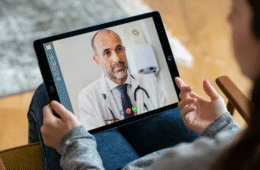
Importance of Patient Feedback in Improving Services
-
by admin
- 0 Comments
For independent clinics, patient feedback is one of the most valuable tools for growth and improvement. Every patient interaction provides insights into what’s working well and what needs change. From appointment booking to billing and care quality, patients often notice details that doctors or staff may overlook. By actively collecting and analyzing feedback, clinics can identify gaps, improve service delivery, and strengthen trust. In today’s competitive healthcare environment, patient expectations are high, and those who listen and adapt stand out. Simply put, feedback is the foundation of better care and stronger relationships.
When patients feel heard, they are more likely to return, recommend the clinic to others, and remain loyal long-term. Independent doctors who prioritize patient feedback not only improve their services but also build a reputation for being approachable and patient-focused. Feedback provides a roadmap for growth—it guides clinics toward the changes that matter most to patients. By integrating structured ways of collecting, reviewing, and acting on feedback, clinics ensure that patients stay at the center of every decision.
Builds trust through active listening
Highlights areas for improvement
Increases patient loyalty
Enhances service quality
Guides strategic decision-making
Strengthens overall patient experience
One of the biggest advantages of patient feedback is the ability to uncover blind spots in clinic operations. While doctors focus on treatment, patients experience the entire journey—from scheduling to follow-up. Their perspective often highlights areas that staff may overlook. For example, long waiting times, unclear communication, or confusing bills can frustrate patients, even if the medical care itself is excellent. By listening to feedback, clinics gain insights into these pain points and can take immediate action to address them.
Collecting patient feedback also strengthens trust. Patients feel valued when their voices are heard, and when they see changes implemented, it reinforces confidence in the clinic. A simple follow-up message or survey shows that the clinic cares about more than just providing treatment—it shows commitment to continuous improvement. Over time, this openness fosters a culture of transparency, where patients see the clinic not just as a service provider, but as a partner in their health journey.
Independent clinics that actively use feedback often enjoy higher patient loyalty. Satisfied patients are more likely to return and recommend the clinic to others. In fact, many clinics report that word-of-mouth referrals increase significantly after adopting structured feedback systems.
Whether it’s through online reviews, surveys, or direct communication, every piece of feedback provides opportunities to improve. In a healthcare landscape where reputation is everything, patient-driven recommendations can be more powerful than paid advertising.

Feedback also helps clinics make strategic decisions. For example, if many patients request extended hours, the clinic may decide to add evening appointments. If patients complain about billing confusion, the clinic can introduce digital billing systems for clarity. These small but meaningful changes, driven by patient input, often have a big impact on satisfaction and retention. By using feedback as a guide, clinics can prioritize improvements that align directly with patient needs and expectations.
Ultimately, embracing patient feedback enhances the overall healthcare experience. When patients feel heard, they are more cooperative, engaged, and satisfied with their care.
Doctors also benefit from smoother interactions and fewer misunderstandings. Independent clinics that integrate feedback loops into their operations position themselves as patient-first practices. The key takeaway is clear: listening to patients is not optional—it’s essential. In today’s competitive healthcare landscape, the clinics that thrive are those that consistently improve by learning directly from the people they serve.







